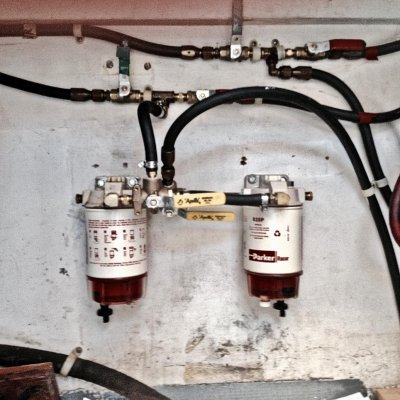1Sailor
Veteran Member
- Joined
- Sep 28, 2012
- Messages
- 76
- Location
- USA
- Vessel Name
- Moondance
- Vessel Make
- Atlantic Prarie 30 LRC
I have two diesel fuel tanks feeding one engine through a series of valves (Picture attached) that enable me to feed and return the fuel to the engine from either tank, using one of two filters. My question is: Can I feed and return from both tanks at the same time? The reason I ask is that the fuel gauge on one tank is unreliable. It's an 1983 boat and I think the float is waterlogged and there is a beam less than 1" over it with no room to remove the mechanism. Using a weight (1 oz. sinker) & string, I can check the fuel level on that tank by removing a plug on top of that tank. The other tank does not have any extra fittings so I have to rely on it's gauge, which seems to be accurate??? If I feed & return from both tanks, I can always be fairly sure where the fuel level is on both. The engine is a Volvo TAMD40B, cruised at between 16 & 2000 RPM WOT is 3400 RPM.
Does anyone have experience with this situation?
I'm having trouble attaching a photo. I can e-mail one to anyone who wants to see it.
Does anyone have experience with this situation?
I'm having trouble attaching a photo. I can e-mail one to anyone who wants to see it.
Attachments
Last edited:

